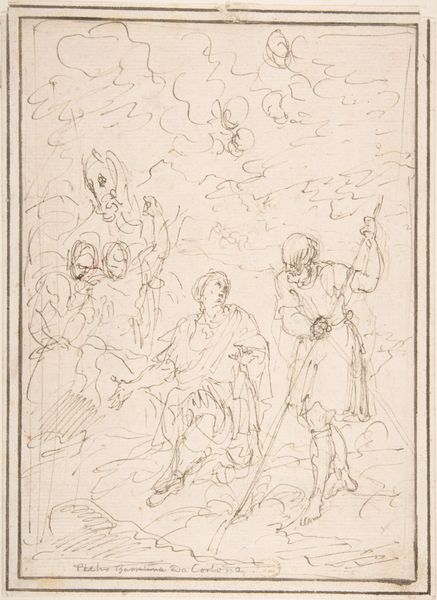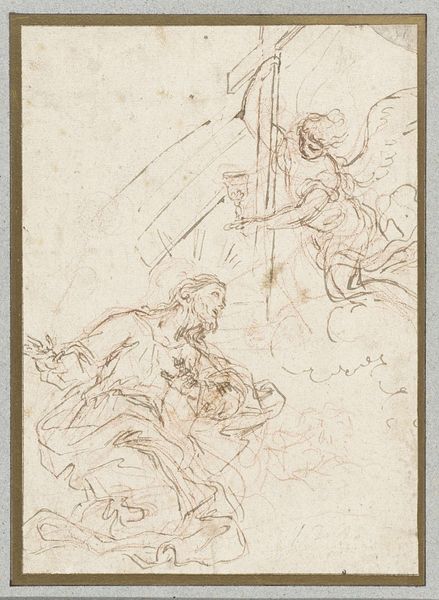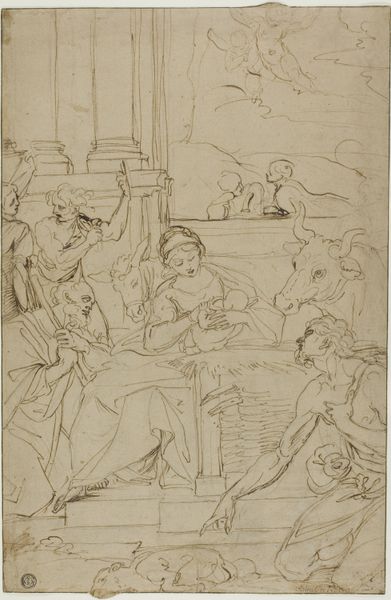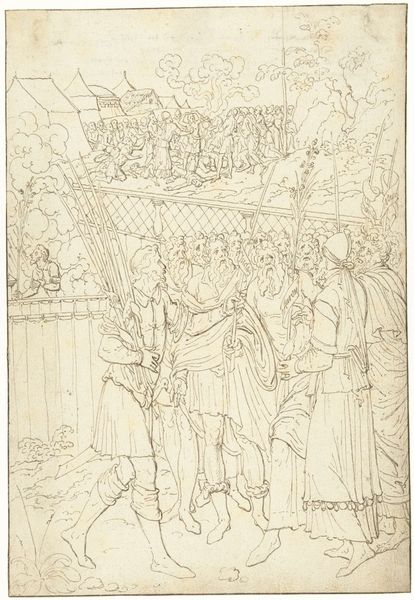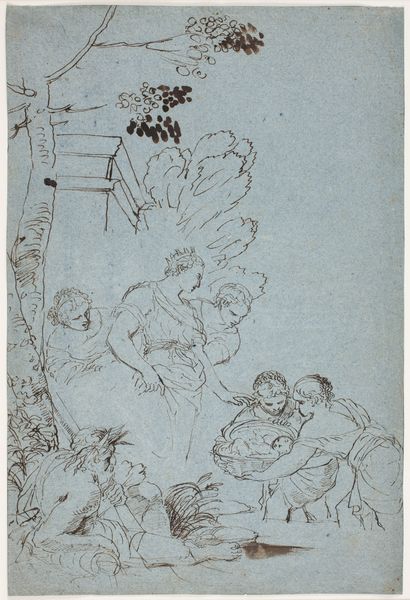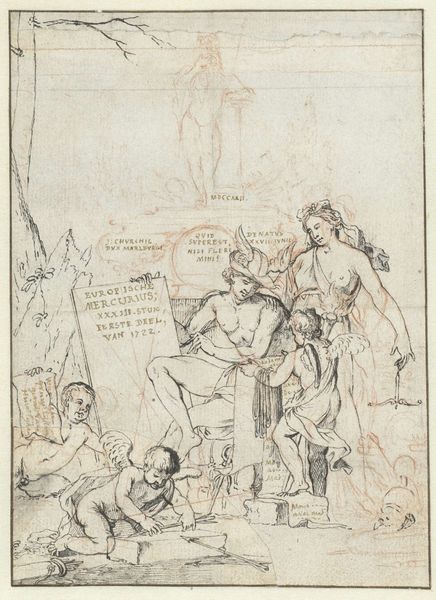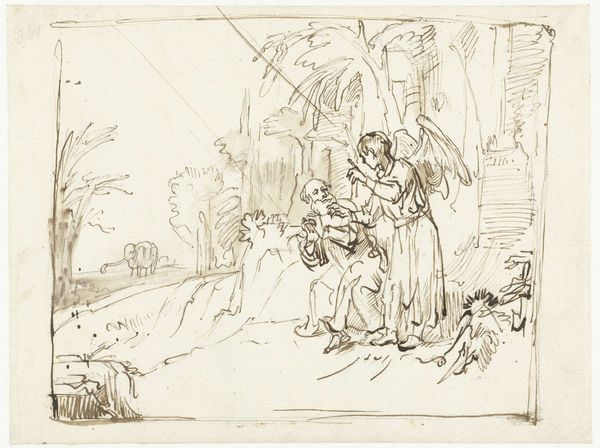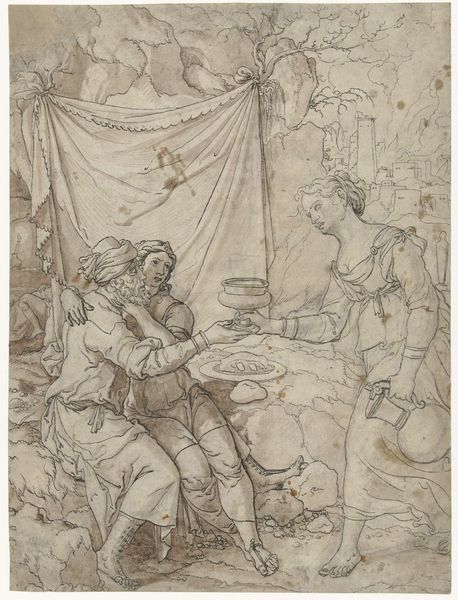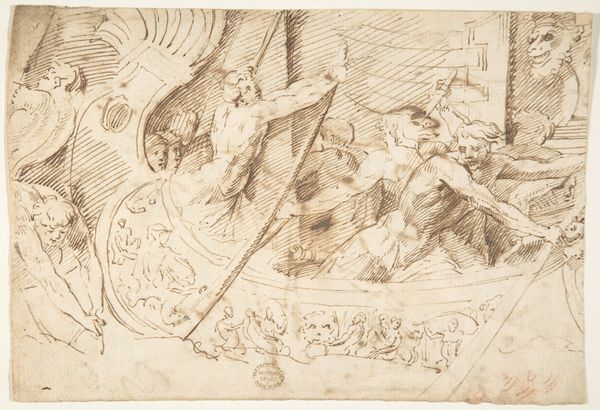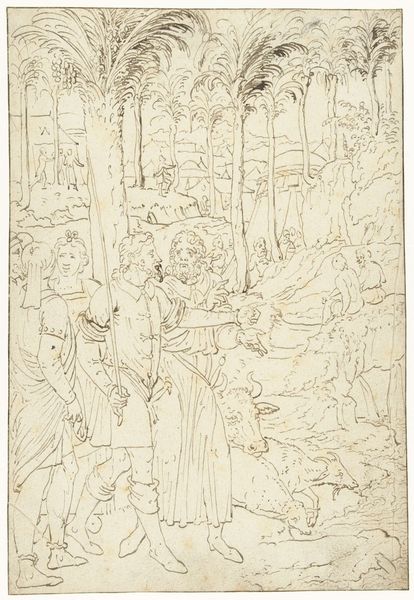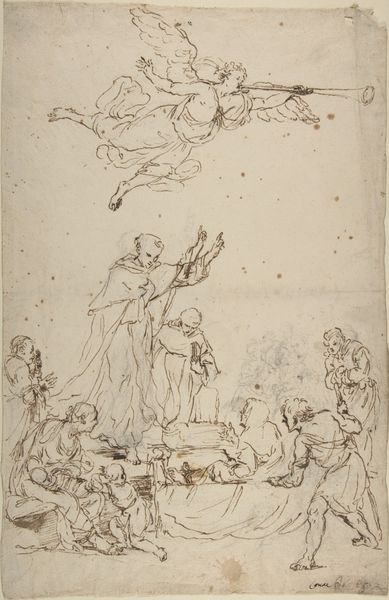
drawing, print, ink
#
drawing
#
allegory
#
narrative-art
# print
#
pen sketch
#
pencil sketch
#
figuration
#
11_renaissance
#
ink
#
history-painting
#
northern-renaissance
#
christ
Dimensions: Sheet: 11 5/8 x 8 1/16 in. (29.6 x 20.4 cm)
Copyright: Public Domain
Editor: This is Dirck Pietersz. Crabeth's "A Reformational Allegory," created around 1550-1555. It's an ink drawing and print. The scene feels very charged, a kind of struggle between earthly and divine forces. How do you interpret this work? Curator: Indeed. Consider the symbolic weight of the figures: Christ bearing the cross, overseen by God the Father, looms above. Below, we see a sword thrust upwards bearing the inscription "t levendt woert," meaning "the living word." Who does this armed figure, assailed by earthly forces, represent to you? What historical narrative is being evoked? Editor: Perhaps the figure is a personification of Faith, bravely holding up the Word against earthly opposition? I imagine that's the ‘Reformational’ element mentioned in the title. Curator: Precisely! This drawing embodies the tension of the Reformation. The sword of the Word confronts the earthly power represented by the soldier. The soldier is a familiar trope of secular authority that's standing on the old order as he's threatened by the Reformation, ready to trample anyone who challenges that. Notice the direction of the sword, too: it’s an appeal to divine authority, right? Editor: Yes, it emphasizes faith’s dependence on the divine in times of hardship. Is the mirror relevant? I notice an inscription inside it... Curator: The mirror-like emblem containing the 'living word' suggests self-reflection, introspection. The Reformation called for individuals to interpret scripture themselves, reflecting inwardly upon their faith rather than blindly following established doctrine. So it really acts as a moral compass, guiding this symbolic figure towards the divine. The individual holds it and presents it towards God, offering his morality as truthful through faith in his savior and God, thus creating a reciprocal connection through religious actions. Editor: It’s fascinating how a single image can capture such complex ideas about religious and political upheaval. Curator: Absolutely. Images, particularly during the Reformation, were powerful tools in shaping belief and inciting action, often communicating ideas more directly than written texts could. Understanding this symbolic language unlocks the cultural memory embedded within the artwork. Editor: This has certainly deepened my understanding of the era! Curator: And for me too, it underscores how symbols can transmit cultural identity and moral conviction through the ages.
Comments
No comments
Be the first to comment and join the conversation on the ultimate creative platform.
